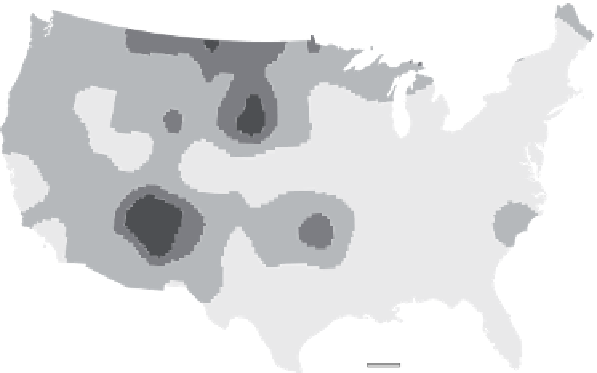Geography Reference
In-Depth Information
The location of reservations across the country is based on historical events.
Eastern tribes were driven from their ancestors' territories in the early nineteenth
century. The Indian Wars between 1830 and 1890 left behind reservations which
were mere shreds of infertile land in the western inlands.
Placed under the supervision of the Bureau of Indian Affairs, Native Americans
lived in miserable conditions until the Second World War. President F.D. Roosevelt
tried to put an end to this injustice by restoring the traditional authority of tribes
(Indian Reorganization Act 1934), but he faced very strong political and
administrative resistance. The official policy of assimilation continued until 1966.
The 1960 census counted only 500,000 “Indians”. Today, there are over 2.5 million.
This increase is not natural, but rather the result of the emergence of an “Indian
pride” which leads a growing number of people to claim a Native American
ancestry, sometimes even if the lineage is doubtful. Today, in the conterminous
United States, only a quarter of Native Americans live on reservations.
Amerindians
(%)
0
50
0 km
0.1
-
0.9
0.9
-
5.0
Method: Quartic Kernel density
smoothing - Bandwidth: 96 km
National avg. share 0.9%
5.0
- 15.0
15
- 51.1
Source: US Census bureau
Designed and made by JM Zaninetti, University of Orleans, CEDETE Institute
Figure 4.2.
Proportion of Native Americans in total population in 2000


















